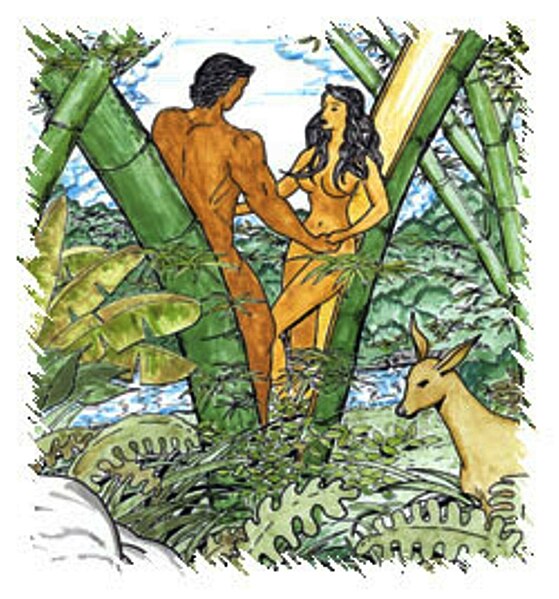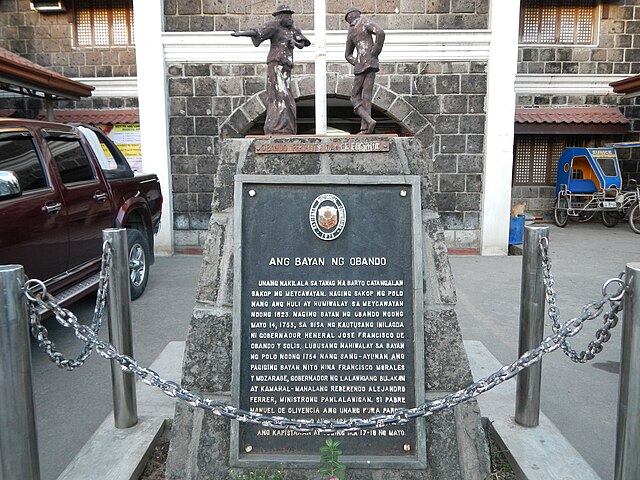In Philippine mythology, the Tigmamanukan was believed by the Tagalog people to be an omen or augural bird. Although the behaviors of numerous birds and lizards were said to be omens, particular attention was paid to the tigmamanukan. Before Christianisation, the Tagalogs believed that the tigmamanukan was sent by Bathala to give hints to mankind whether they needed to proceed on a journey or not. In some Philippine creation myths, the tigmamanukan bird was sent by Bathala to crack open the primordial bamboo whence the first man and woman came out.
A sacred symbol of Bathala, depicting him in the middle with an anito guardian underneath him and a tigmamanukan omen bird behind him. The non-traditional image is influenced by modernity as the tigmamanukan is wrongfully portrayed as a sarimanok from Mindanao.
Fairy bluebirds are believed to be the tigmamanukan omen birds of the Tagalog supreme god, Bathala.
Some stories say the Tigmamanukan pecked open the bamboo shoot that contained the first man and woman.
The Asian fairy bluebird (Irena puella turcosa) is one of two species that have been suggested to be the actual bird referred to by the ancient Tagalogs as the tigmamanukan.
Philippine mythology is rooted in the many indigenous Philippine folk religions. Philippine mythology exhibits influence from Hindu, Muslim, Buddhist, and Christian traditions.
Portrait of the first man, Malakas, and woman, Maganda, who came out from a bamboo pecked by the bird form of the deity of peace, Amihan, in Tagalog mythology
The Maranao people believe that Lake Lanao is a gap that resulted in the transfer of Mantapoli into the center of the world.
The Tagalog people's Obando Fertility Rites, before becoming a Catholic festival, was initially an animist ritual dedicated to the intersex deity, Lakapati, who presided over fertility, the goddess of love, Diyan Masalanta, and the supreme god, Bathala.
The Virgin of Antipolo has animist connections. Many of the rituals and prayers connected to the Lady of the Breadfruit (Tipolo) Tree have similarities to the pre-colonial indigenous cult of Maguayen, the Visayan god to whom people made offerings before building a boat or embarking on a voyage. Similarly, the Virgin of Antipolo is also asked for protection and well-being, as well as for the blessing of new cars, the modern mode of transportation.







